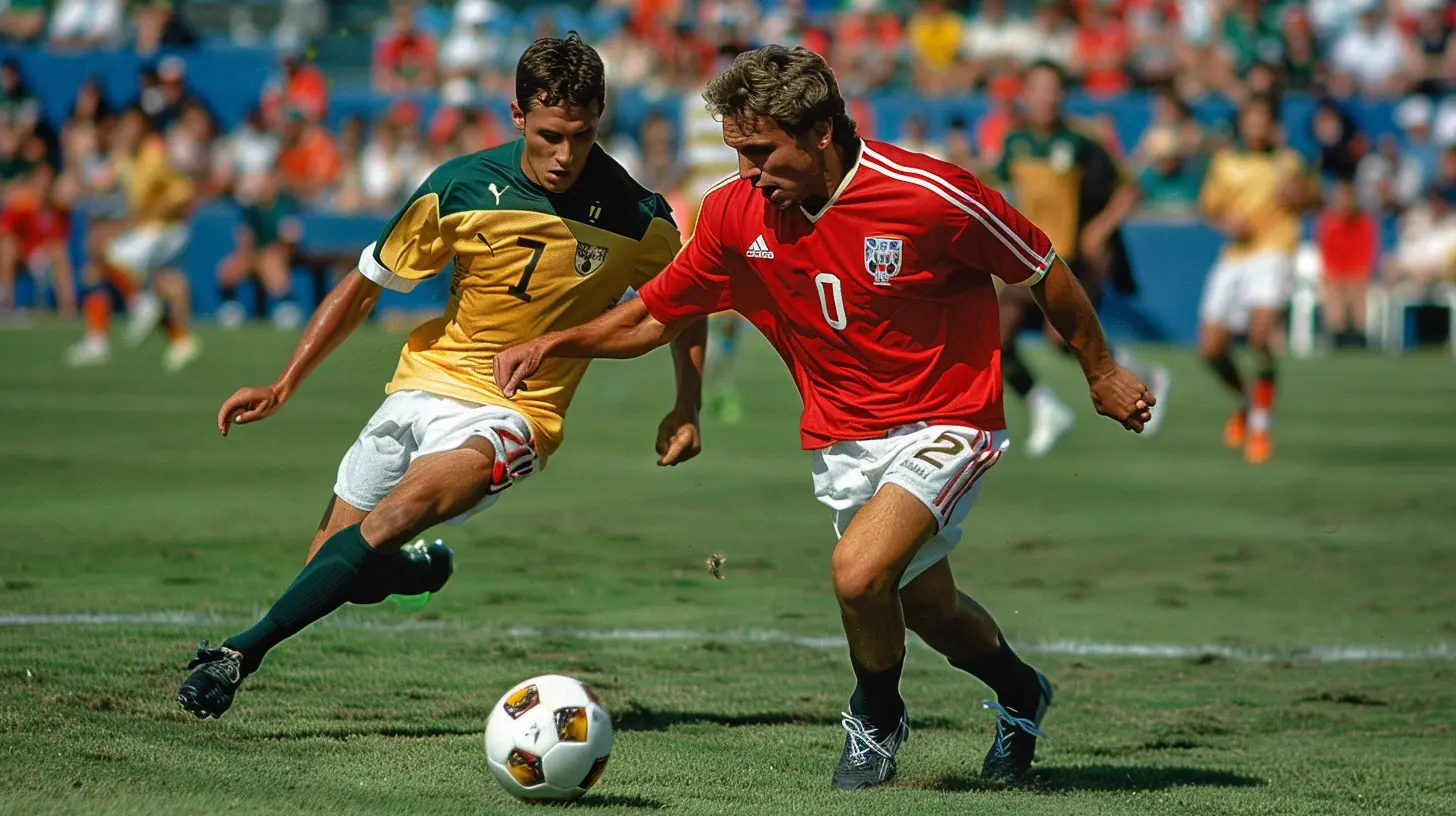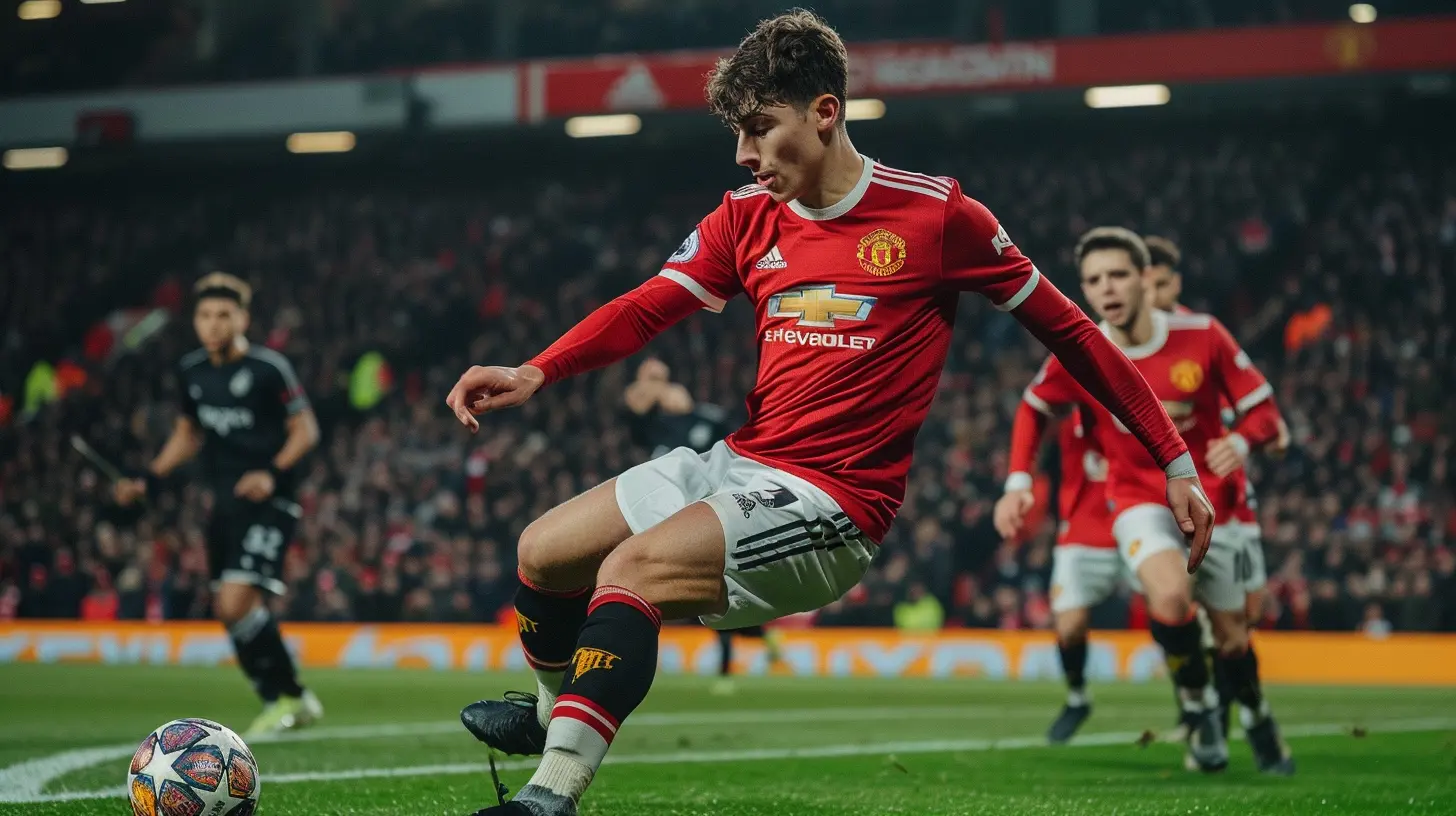The Art of Counter-Attacking: Timing and Precision
20 June 2025
In sports, few tactics are as thrilling—or devastatingly effective—as a well-executed counter-attack. It’s that heart-racing moment when a team snatches the ball, flips the field, and goes from defense to offense in a heartbeat. Whether you're watching soccer, basketball, or even boxing, the counter-attack is the art of turning pressure into opportunity, chaos into clarity. But what really makes a counter-attack tick? It all comes down to two things: timing and precision.
Let's dive into the mechanics behind this eye-catching tactic and reveal how it's not just about speed—it's about smart, calculated moves that punish an opponent’s overcommitment.
What Exactly Is a Counter-Attack?
Alright, let’s clear this up first—what is a counter-attack?In sports terms, a counter-attack is a strategy where a team or athlete shifts rapidly from defense to offense immediately after gaining possession. Essentially, you wait for the opponent to commit forward, then strike when they least expect it.
Imagine you’re playing chess, and your opponent gets a bit too aggressive. They leave their king slightly exposed. Boom—you spot it and make a swift, calculated move. That's a counter-attack, just on a grass field, court, or ring instead of a chessboard.
The Roots of the Counter-Attack: A Brief History
Counter-attacking isn't some new-age strategy cooked up in a tactics lab. It’s as old as competition itself.In football (soccer), the legendary Italian "Catenaccio" style heavily relied on deep defending and lightning-fast breakaways. In basketball, many greats like the 80s “Showtime” Lakers made a living off quick transitions. Even in martial arts, legendary fighters like Muhammad Ali used counter-punching as their secret weapon, letting opponents expose themselves before striking with surgical accuracy.
So yeah, this isn't just a trend—it’s a time-tested artform.
The Magic Formula: Timing + Precision
Now let’s get into the heart of it.Timing: The Window of Opportunity
Let’s be real—timing is everything in life, sports included. A poorly timed counter-attack is just...well, a turnover waiting to happen.When an opponent commits too many players forward, they leave gaps—those precious pockets of space. A sharp team senses it, reads the play, and then pounces at the exact moment the ball is won. It’s not about always pushing forward; it’s about choosing the right moment to go all in.
It’s like catching a wave when surfing. Paddle too early—nothing happens. Too late—you get crushed. But hit the sweet spot? You’re flying.
Key Components of Timing:
- Reading the game or fight
- Recognizing fatigue or disorganization in opponents
- Acting fast without rushing
- Communicating instantly across your team
Precision: The Art of Execution
Timing opens the door. Precision walks through it.Ever seen a soccer team win the ball and fluff the pass? Or a boxer swing wildly instead of landing a clean counter-punch? Yeah, all that anticipation goes down the drain.
Precision means every move—from a pass to a sprint, to a shot or punch—has to be spot-on. In a counter, you don’t have the luxury of time or numbers. One wrong move, and the moment is gone.
Precision involves:
- Laser-sharp passing or striking
- Flawless spatial awareness
- Crisp execution under pressure
- Coordination between players or teammates
Think of it like cooking: You’ve got all the ingredients (timing), but if you don’t follow the steps correctly (precision), you’re not getting that Michelin star meal.
The Role of Awareness: Reading the Opponent
The best counter-attackers are psychic. Or at least, it feels that way.They have an uncanny ability to read the flow of the game and sense when the opponent’s plan begins to unravel. Whether it's a midfielder eyeing a loose touch or a fighter spotting a dropped guard, awareness is the unsung skill behind every deadly counter.
Want to master the art? Watch games or matches carefully. Look for those “what were they thinking?” moments when one side loses shape. That’s golden counter-attack territory.
Counter-Attacking In Different Sports
Let’s not box ourselves in—counter-attacking is everywhere. Here’s how it plays out across different sports.⚽ Soccer
Soccer is ground zero for the counter-attack. It's often referred to as the classic “play against possession.” Teams like Leicester City during their Premier League-winning season in 2015-16 made it an art.Key traits in soccer counter-attacks:
- Quick vertical passes
- Wide players sprinting into open space
- A clinical finisher ready to cap it off
Top teams know when to sit deep and strike fast—it’s not parking the bus; it’s setting a trap.
🏀 Basketball
In hoops, this is the fast break. One rebound or steal and the offensive transition is in full swing.Here, timing is even more micro-scale—players have to make split-second decisions. A good fast break involves:
- The “outlet” pass immediately after the rebound
- Wings running hard toward the basket
- A trailer ready to clean up or take a three
You mess up one pass, and you're going back on defense. Slam dunks and easy layups? That’s the reward for nailing it.
🥊 Boxing
In boxing, the counter-attack is literally a reaction.Boxers often bait their opponents into throwing punches, only to slip and return fire. It's about rhythm and reading the opponent’s patterns.
Key elements of a boxing counter:
- Defensive reflexes
- Timing the opponent’s punch
- Accurate targeting with the counter
It’s like being a matador—gracefully dodging a bull and delivering your own blow when they’re off-balance.
Mental Toughness: The Secret Ingredient
Let’s not forget the mental side.A good counter-attack requires ice-cold nerves. You’re often under siege, the crowd’s roaring, the pressure’s mounting. But great teams and players don’t panic. They trust their process, wait for that one window to explode forward.
It’s the confidence to turn defense into offense in a split second. That inner voice that says, “Hold...hold...NOW.” That takes vision, experience, and yes—a little swagger.
Mistakes to Avoid with Counter-Attacks
Even a powerful strategy like this isn’t immune to pitfalls. Here's where many athletes and coaches mess it up:❌ Going Too Early
Jumping the gun can lead to giving the ball away. Timing is about patience, not panic.❌ Overcommitting
Sending too many players forward during a counter can make you vulnerable to—you guessed it—a counter on your counter!❌ Poor Communication
This is a team game (even in individual sports, like boxing, there’s a coach and corner crew). If everyone’s not on the same page, the whole move collapses.❌ Getting Predictable
If you rely on counters too much, opponents will adjust. Mix it up—sometimes keep possession, sometimes go long. Keep them guessing.How to Train for Counter-Attacking Mastery
Alright, say you’re a player or coach wanting to make the counter your weapon of choice. How do you build that edge?Here’s a quick training roadmap:
1. Drill Defensive Situations
You need to get comfortable absorbing pressure. Run scenarios where your team defends with numbers, wins the ball, and breaks out quickly.2. Work on Speed & Passing
No counter works without quick legs and even quicker minds. Include sprint drills, one-touch passing, and transition play in practice.3. Study Game Footage
Watch the pros—notice how they time their moves. Look for the triggers: poor touches, overcommitted lines, lack of cover. Recognizing patterns is key.4. Mental Reps
Talk strategy during team meetings. Create a common language, like “Go,” “Break,” or “Switch,” so everyone knows when it’s time to flip the script.Famous Counter-Attacking Moments
Still not convinced about the beauty of the counter-attack? Here are a few jaw-dropping examples that live in highlight reels forever:- Zinedine Zidane’s Real Madrid – Multiple Champions League goals started from their own half and were finished with surgical precision.
- LeBron James-led Miami Heat – Their fast breaks were practically poetry in motion.
- Anderson Silva’s Counter-Punch KO – A spinning back elbow and perfect punch timing took down opponents before they knew what hit them.
It’s not just effective. It’s cinematic.
Final Thoughts
The counter-attack isn’t just about winning—it’s about changing the narrative in an instant. It takes guts to sit back, smarts to spot the moment, and skill to strike with purpose. Timing and precision are your north stars. Without them, you’re just running.So next time you're watching a game or stepping on the field, remember: sometimes, the best way to attack... is to wait.
And when that moment comes? Don’t blink.
all images in this post were generated using AI tools
Category:
TacticsAuthor:

Ruben McCloud
Discussion
rate this article
2 comments
Winter Coleman
This article adeptly highlights how counter-attacking is more than mere opportunism; it requires a keen understanding of timing and precision. Mastery of these elements transforms a team’s defensive strategy into an offensive weapon.
June 22, 2025 at 11:15 AM

Ruben McCloud
Thank you for your insightful comment! I'm glad you appreciated the emphasis on timing and precision in counter-attacking strategies.
Weston McCool
Counter-attacking: where timing is crucial, precision is king, and your defender's face is the canvas for your artistic masterpiece—just hope he doesn’t block your paintbrush!
June 20, 2025 at 3:04 AM

Ruben McCloud
Thank you! You've beautifully captured the essence of counter-attacking—it's all about that perfect blend of timing and precision to create a moment of brilliance on the field.


